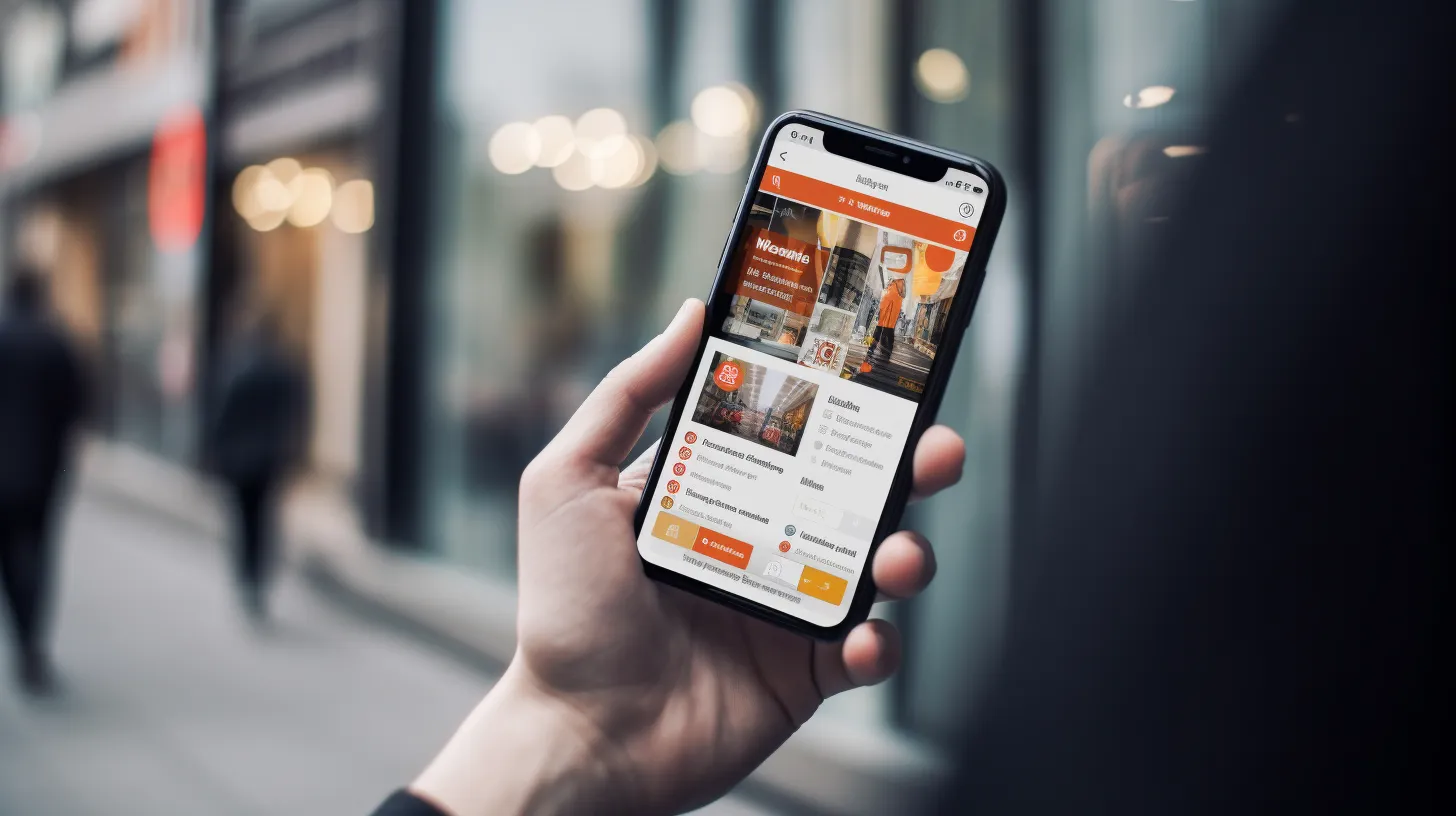Mobile-First Strategy: Mobile Marketing In Internet Marketing Services
Are you looking to master the world of internet marketing services? Then it's time to implement a mobile-first strategy. As more and more people rely on their smartphones for browsing the internet, it has become crucial for businesses to make their websites and marketing campaigns mobile-friendly.
A mobile-first strategy involves designing your website and online presence with mobile users as the primary audience. This means that your website should be optimized for smaller screens, load quickly, and be easy to navigate with touch controls. By putting mobile users first, you can ensure that your business stays competitive in today's digital landscape. In this article, we will explore the importance of a mobile-first strategy in internet marketing services and provide tips on how to design a responsive website, optimize social media for mobile users, incorporate mobile-friendly email marketing, and measure the success of your efforts.
Understanding the Importance of Mobile-First Strategy
The key to success in internet marketing is prioritizing mobile devices with a strong mobile-first strategy. With the prevalence of smartphones and tablets, it's crucial that businesses focus their digital efforts on these platforms. Mobile-first means designing websites, apps, and other online content for mobile devices first before scaling up to desktops.
Why is this so important? For one, over half of all internet traffic comes from mobile devices. If your website isn't optimized for these smaller screens, you're missing out on a significant portion of potential customers. Additionally, Google now uses mobile-friendliness as a factor in search rankings. This means that if your site isn't designed with mobile users in mind, it could be buried in search results.
To truly succeed in internet marketing, you need to prioritize the needs and preferences of your audience - and that means catering to their preferred device. By adopting a mobile-first strategy, you're ensuring that your business stays relevant and competitive in today's digital landscape. From there, you can move on to designing a responsive website that adapts seamlessly across all platforms.
Designing a Responsive Website
To create a website that adapts seamlessly to any device, you'll want to focus on designing a responsive layout. A responsive design means your website will adjust its size and layout based on the screen size of the device used to access it. This is important because users expect websites to be easy to navigate regardless of whether they are using a desktop computer or mobile phone.
When designing a responsive website, keep in mind that simplicity is key. A cluttered design can make it difficult for users to find what they're looking for. Use large fonts, simple colors, and clear navigation menus. Also, eliminate any unnecessary elements that can slow down your site's loading time.
Optimizing social media for mobile users is essential in today's digital world. With more people accessing social media through their mobile devices than ever before, it's crucial that your social media content is optimized for these users. By doing so, you'll increase engagement and reach a wider audience.
Get found online with Authority Solutions®' SEO.
Optimizing Social Media for Mobile Users
Make sure your social media content is optimized for users accessing it on their smartphones, as this will increase engagement and help you reach a wider audience. With the rise of mobile devices, more and more people are using their phones to access social media platforms. In fact, studies show that over 80% of social media users access these sites via mobile devices.
To optimize your social media content for mobile users, first ensure that your images and videos are sized appropriately for smaller screens. Use high-quality visuals that load quickly but don't slow down the user's experience. Additionally, keep in mind the limitations of mobile screens when creating text-based posts - shorter sentences and paragraphs with clear headers will be easier to read.
Incorporating mobile-friendly email marketing is another important step in a successful mobile-first strategy. By making sure all of your digital marketing efforts cater to smartphone users, you can connect with customers no matter where they are or what device they're using.
Incorporating Mobile-Friendly Email Marketing
Incorporating email marketing that is optimized for smartphones can significantly enhance your outreach efforts and foster a more seamless experience for your customers. With the majority of people accessing their emails on mobile devices, it's important to ensure that your emails are easy to read and navigate on smaller screens. Here are three ways you can make sure your email marketing is mobile-friendly:
- Keep it short and sweet: Mobile users have shorter attention spans, so make sure your emails are concise and get straight to the point.
- Use responsive design: This means that your email will adjust its layout based on the screen size of the device it's being viewed on. This ensures that everything remains readable and looks great no matter what size screen someone is using.
- Make it easy to take action: Include clear calls-to-action (CTAs) in your emails that lead directly to a mobile-optimized landing page or form.
By incorporating these practices into your email marketing strategy, you can improve engagement rates and increase conversions from mobile users.
Now that you've optimized your email marketing for smartphones, it's important to measure the success of this effort in order to continually improve upon it. In the next section, we'll discuss how you can track metrics such as open rates, click-throughs, and conversion rates in order to evaluate the effectiveness of your mobile-first strategy.
Measuring the Success of Your Mobile-First Strategy
Now it's time to see how well your mobile-first strategy is performing. One of the best ways to measure success is by tracking key metrics like open rates and conversion rates. By analyzing these metrics, you can determine if your email marketing efforts are resonating with your target audience.
To get started, take a look at your email open rates. This metric measures the percentage of people who actually opened your emails out of those who received them. A high open rate indicates that your subject line was effective in grabbing the attention of your subscribers. On the other hand, a low open rate could mean that you need to reevaluate your subject lines or even the timing of when you send out emails.
Another important metric to track is conversion rate - the percentage of people who took action after clicking on a link in your email. For example, if you sent an email promoting a sale and someone clicked through to purchase something on your website, this would count as a conversion. A high conversion rate means that you're effectively driving traffic and sales through your mobile-first email marketing efforts. If you're not seeing high conversion rates, consider testing different calls-to-action or landing pages to see what works best for your audience.
By monitoring these key metrics and making adjustments accordingly, you'll be able to continually improve upon your mobile-first strategy and drive better results for your business. Remember: mastering mobile marketing takes time and effort, but with dedication and persistence, you can achieve great success!
Frequently Asked Questions
What are some common mistakes that businesses make when implementing a mobile-first strategy?
When implementing a mobile-first strategy, businesses often make mistakes such as not optimizing for different screen sizes or neglecting to test their mobile site. Additionally, failing to provide a seamless user experience can turn potential customers away.
How can businesses ensure that their mobile website is accessible and user-friendly for individuals with disabilities?
Ensure your mobile website is accessible and user-friendly for individuals with disabilities by implementing features such as alt text for images, clear and concise content, and easy navigation. Consider hiring a professional to conduct an accessibility audit.
Are there any legal considerations that businesses should keep in mind when implementing a mobile-first strategy?
You should keep in mind that there are legal considerations when implementing a mobile-first strategy. Ensure your website complies with accessibility laws, data privacy regulations and advertising standards to avoid potential legal issues.
How can businesses effectively target their mobile audience through mobile advertising?
To effectively target your mobile audience through mobile advertising, create engaging and visually appealing ads that are optimized for mobile devices. Use targeted audience segmentation and location-based targeting to reach the right people at the right time.
What impact does mobile-first strategy have on search engine optimization (SEO) and how can businesses optimize for mobile search?
To optimize for mobile search, focus on creating a responsive design, providing high-quality mobile-friendly content, improving page speed and load times, and using relevant keywords. Mobile-first strategy impacts SEO by prioritizing mobile user experience and engagement.
Conclusion
Congratulations! You have successfully learned about the importance of mobile-first strategy in internet marketing services. By designing a responsive website, optimizing social media for mobile users, and incorporating mobile-friendly email marketing, you can make your brand more accessible to potential customers on their smartphones and tablets.
Remember to track the success of your mobile-first strategy through metrics such as click-through rates and conversion rates. With the increasing use of mobile devices for online activities, taking a mobile-first approach is crucial for staying competitive in today's digital landscape. By implementing these tactics, you can enhance your brand's visibility and engagement among mobile users. So go ahead and take the first step towards creating a successful mobile marketing campaign that helps you connect with your audience on the go!







